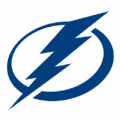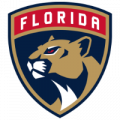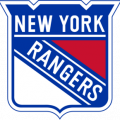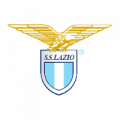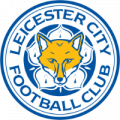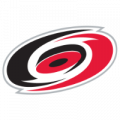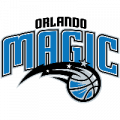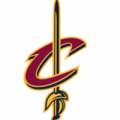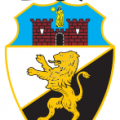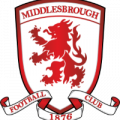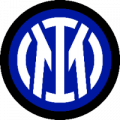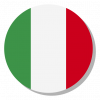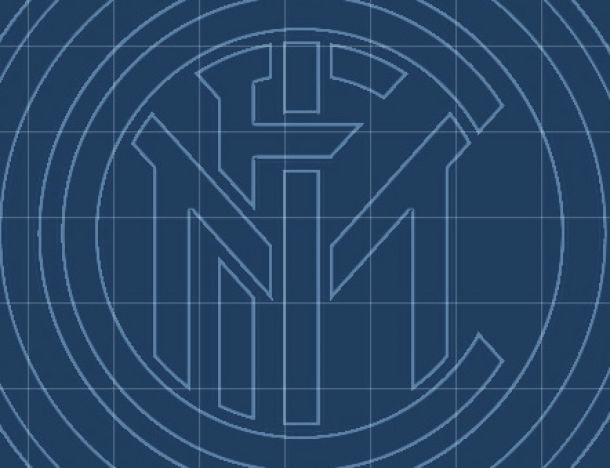After arguably the fourth disappointing and underwhelming season in a row, Inter fans have had enough, and quite rightly too.
The team they know and love has been dragged to its knees by a series of bad decisions, instability and a selling mentality that has cost them over the past few years.
Gone are the days of standing toe to toe with Europe’s elite; now Inter are simply hoping and praying to find that ‘magic formula’ to catapult themselves back to the top of not just Italian football, but also Europe as a whole.
The ‘magic formula’ suggestion is merely an observation based on the evident lack of serious investment into the team, preferring to buy on the cheap and sell their best assets has proved not to be a successful recipe under coaches such as Andrea Stramaccioni and Walter Mazzarri.
Simply put, it is time for change. Fresh ideas, fresh tactics, and a generally fresh approach; all things which Roberto Mancini can instill with the financial support of President Erick Thohir.
Last season
Before we go any further into looking at how to resurrect this fallen giant, we must first understand both the extent of the problem and its cause.
Before the 2014-15 season began, there were some questionable moves already being made by the board.
On July 1st, Inter announced that one-time prized talent Rene Krhin had been sold to Bologna for €1.2million. A day later, Walter Mazzarri was given a one-year extension on his deal, now lasting until June 2016, and Tommaso Berni had been given a one-year contract with Inter.
Thirteen days after that, Yann M'Vila signed from Rubin Kazan on a season long loan, with the option to make permanent for €9million.
Alfred Duncan was sent to Sampdoria on a two-year loan, while Inter bought Daniel Osvaldo from Southampton and Gary Medel from Cardiff City to add bulk to the respective departments.
Ezequiel Schelotto and Ruben Botta were loaned to Chievo Verona, with the club having the option to buy the former at the end of the season. Ricardo Alvarez was sent to Sunderland on loan with a buying clause if the club weren't relegated to the Championship (something which is currently being disputed, as Sunderland do not want to pay up).
Heading into the season, there was optimism that the team could build on the 5th place finish from the previous season.
Looking more generally at the season, it is fair to say Inter surpassed themselves with a shocking eighth place that had the fans bemoaning for the end of the season by February.
A managerial change in January took place, further de-stabilising the club that has been searching for consistency from top to bottom since 2011.
In came Roberto Mancini, bringing a new approach and style to the team, but he found things difficult in his return to Il Biscione.
Amassing just 55 points from 38 games, winning only 14 games, the Nerazzurri never really got started despite a 7-0 win and a 2-0 win in the opening four games, in which they conceded just one goal.
Three goal humiliations by Cagliari at home and Fiorentina away set the tone for the rest of the campaign, and by matchday 22 they sat as low as 13th in the table.
Winning five out of the last eight set up a semi-entertaining conclusion to the season, with a small chance of qualifying for Europe on the last day hanging on Parma beating Sampdoria, a side that despite finishing bottom had taken four points from Inter following a 2-0 home win and a 1-1 draw away at the San Siro.
Scoring just 59 goals quite simply wasn't enough, and conceding 48 was far too many. Aside from Napoli and AC Milan, Inter conceded the most goals out of sides in the top half of the table, while 59 goals scored was the least out of top eight sides apart from Sampdoria and Roma (who both conceded less to negate this fact).
In Europe, Inter reached the last 16 of the Europa League after topping a relatively easy group consisting of Dnipro Dnipropetrovsk, Qarabag and Saint-Etienne.
They scraped past Celtic in the round of 32, surrendering an early 2-0 lead to draw 3-3 at Celtic Park before Fredy Guarin's screamer bailed them out at the Meazza, only to be comfortably eliminated by Wolfsburg in the next round.
The quarter-final was all Inter could manage in the Coppa Italia, losing to a sickening late Gonzalo Higuain goal away at Napoli having knocked out Sampdoria in the previous round at home.
Things fell apart pretty badly considering the hope that was present at the start. In January, both Osvaldo and M'Vila were sent back to their parent clubs, the former leaving on bad terms as he failed to turn up for training two days running.
Lukas Podolski's arrival on loan from Arsenal caused some excitement, however it quickly became apparent his head was not in the right place as he struggled to find the net for so long, eventually netting a goal away at Udinese late in the campaign.
Relative bright spots were restricted to the development of Mauro Icardi, who captured his first Capocannoniere after scoring 22 goals, tied with veteran Luca Toni, and the capture of Swiss international Xherdan Shaqiri.
Brought in from Bayern Munich, his capture did show that Inter are still an attractive prospect for most players, something which will be revisited later on.
The Tactics (2014-15)
By the end of the season, under Roberto Mancini, this is generally how the team lined up. The 'first choice' eleven, if you will.
Formation:
The most important and intriguing aspect of this particular tactic is the formation. The 4-3-1-2 was a system that Mancini had used well by the end of the season, having also flirted with a 4-2-3-1 occasionally to offer a bit more width.
The thing about the 4-3-1-2 is how narrow a system it is; the only width provided by the overlapping full-backs (a dangerous situation considering the presence of only one out and out defensive midfielder and two fairly slow centre backs) and roaming left and right central midfielders (dangerous again for the same reasons).
Selection:
Position wise, the goalkeeper spot was obviously tied down by Slovenian international Samir Handanovic, however Juan Pablo Carrizo did make nine appearances in the Europa League, a competition which Mancini had promised the Argentine game time in.
At full-back, Danilo D'Ambrosio was the established starter on the right side by the end, but Inter had plenty of candidates for both left and right back in the form of Yuto Nagatomo, Dodo (brought in on loan from Roma) and Davide Santon (arrived from Newcastle United).
Juan Jesus found himself playing left-back for a few of the final games, however he mostly appeared in the left-sided centre-back position with club captain Andrea Ranocchia occupying the other side. Nemanja Vidic, who had struggled for minutes, came in and looked very solid, eventually becoming a frequent pick at CB when Jesus was moved to LB.
Gary Medel, Mateo Kovacic and Fredy Guarin mostly occupied the midfielder three, with Medel playing as the central and deeper midfielder of the three due to his tough-tackling "pitbull" playstyle.
Marcelo Brozovic did actually keep Kovacic out of games for a spell, while Hernanes spent plenty of time keeping the bench warm due to the arrival of Shaqiri.
Zdravko Kuzmanovic and Joel Obi deserve mentions for their 25 and 17 total appearances respectively, the latter scoring a vital equaliser in the Derby della Madonnina during Mancini's first game as manager.
The position behind the striker was occupied almost completely by Xherdan Shaqiri, but due to Hernanes putting in some good late performances he found himself ousted slightly towards the end of the season.
Mauro Icardi and Rodrigo Palacio were the main duo up front, with 99 appearances combined across all competitions, tallying 39 goals. Lukas Podolski made 18 appearances following his January loan, scoring just once.
The problems
Without making this sound like a rant, there were some pretty glaring errors both in the set-up and in the actual play style.
The 4-3-1-2 is all about balance; you need to be sure that each player on the field is aware of their responsibility both on the offensive and defensive side of play. This is particularly important for the midfielders.
The amount of times that Inter were caught with too many bodies forward in stupid situations where that shouldn't be the case was laughable. The perfect game to demonstrate everything wrong with the 2014-15 Inter campaign was the1-1 home draw with Parma.
Despite taking a fluky early lead, Mancini's men failed to take the initative against the rock-bottom side, succumbing to a sucker punch equaliser with yet more evidence of defensive frailty. A set-back it may have been, but Inter should still have won comfortably given the gulf in class the table would suggest, yet the game ended 1-1 as the home side failed to create anything to force the game.
No urgency, no passion, no commitment, poor defending and a lack of ideas; everything seen in 180 minutes against Parma (including the 2-0 loss away earlier in the year) was seen in the whole season, barring a few pleasant surprises.
Tactically, it seemed the players weren't sure whether to come or go, so to speak. As I mentioned, the midfield three is the most important part of this whole formation.
Gary Medel in the middle is the anchor; and he had a solid season overall which subsequently means he doesn't deserve much blame. The chopping and changing of the left CM position didn't help, but Mateo Kovacic needs practice to play in that position, something which became apparent as time wore on, Marcelo Brozovic the same.
Fredy Guarin was a very problematic player this season. This is no witch-hunt, yet it needs to be said that the amount of times he was wasteful in possession, caught in possession, caught out of position or generally being lazy was unacceptable. Every time he is caught out of position, it makes the task a lot harder for Danilo D'Ambrosio on the right side, a player who is fairly weak defensively as it is compared to some of the opponents he will face.
The lack of width often forces with LCM and RCM out into wider areas of the pitch, and with Shaqiri/Hernanes pushing up in behind the strikers to create, it isolates Medel in the middle of the part, something which deflects most blame from the Chilean international.
Then, there is the full-backs themselves who are encouraged to create width often at the expense of defensively sound positioning. Simply put, Jesus/Vidic and Ranocchia will concede a colossal amount of goals with the full-backs bombing upfield because they are not agile enough, quick-minded enough and skilled enough to deal with pacy counter attacks.
In my view, it seemed logical to adopt the 4-2-3-1 formation with this team, something looking a little like this:
With Shaqiri returning to a more natural wide position, he can use his pace and strength to get into dangerous positions on a regular basis. Palacio occupying the left attacking midfield role would be an experiment, although he has the attributes to adequately play there. Hernanes at CAM provides a threat both from open play and set pieces, allowing him to focus on his skills as well.
Icardi being the focal point of attack allows him to adopt the complete forward role, something which he can definitely perform as he has demonstrated this season. In my view, he could score even more than 22 in a season if he was a lone striker.
The real key to this formation is the Kovacic-Medel partnership as the deeper midfield pair, with Kova playing more as a deep-lying playmaker who will execute key passes and feed the front four, while Medel has some assist on the defensive side as both players like to get stuck in and break up play.
Two natural full-backs is a no-brainer in my opinion, allowing Inter to return to a more logical CB pairing of an anchor and a more agile defender. Likelihood is that Ranocchia won't be dropped as captain, but for this I have gone with Vidic as I believe him to be the far superior defender.
Basically, it just works better. The width promotes creativity, the two deeper midfielders protecting a weak back four, and many find the 4-3-1-2 a strange formation to begin with. Its all just opinion, though, and its all in vein now because the season is over and done with.
There are parts of this formation that I would like to re-visit when I look ahead to how the team should line-up next season.
So, that just about summises what went wrong last season, and where the team needs to improve to take the next step.
In the second instalment, it will be look at the current squad; who to retain, who to sell, who to keep and, most importantly, who to sign.



